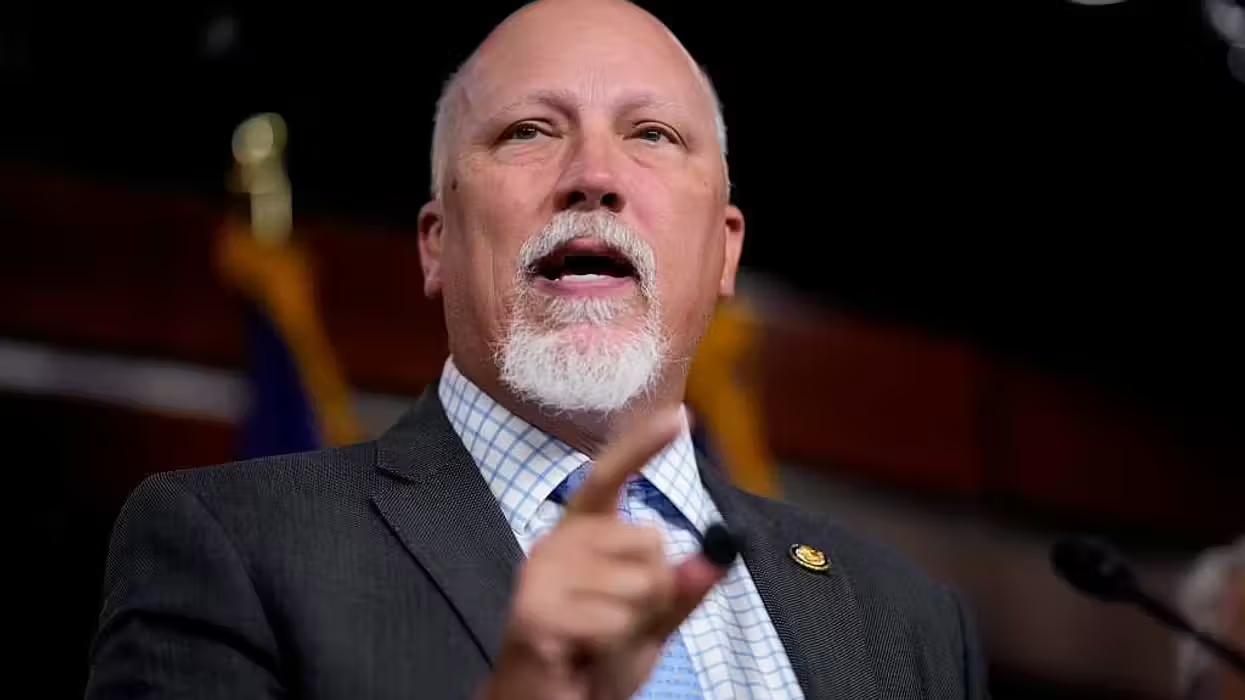
© 2025 Blaze Media LLC. All rights reserved.
"If we do nothing . . . the postal service could literally close later this year."
The United States Postal Service (USPS) is going to have to find a way to make up for hemorrhaging financial losses (which has already rendered them incapable of making a $5.5 billion payment to its employee healthcare plan by the Sept. 30 due date) or face the possibility of closing shop for the winter.
Their unique situation raises two questions: first, how did it come to this? Second, how should it be addressed?
Concerning the first question, the USPS has been thrust into this desperate situation in part because of the emergence of new technologies (i.e. cell phone, email, etc.). Modern-era tools have enabled literally millions of Americans to throw off their dependency on traditional courier-style communication. But this cannot the real reason that the USPS is waist-deep in financial ruin. (Bear in mind, they were able to weather the advent of the telegraph and the telephone; could email and texting alone really force the USPS out of business?)

Surely, there are other elements that have helped to inflict heavy financial losses on the government agency.
First of all, a 2006 law requiring the postal service to pay an average of $5.5 billion annually for 10 years to finance retiree health costs for the next 75 years has cost the USPS dearly and, as mentioned before, it has put them into a position where they will most likely default on their bills.
But what has really contributed to the decline of one of America’s oldest institutions is not just its failure to appropriately respond to marketplace competition but its paralyzing contractual agreements with—you guessed it—labor unions.
Currently, labor costs represent 80 percent of the agency’s expenses (as opposed to UPS’ 53 percent and Fedex’s 32 percent) and costs continue to rise and grow with the help of such incredibly, unthinkably harmful provisions as the "no-layoff" clause in union contracts.
Moreover, it has been discovered recently that the USPS has overpaid an estimated $60 billion into its employee pension plans.
You read that correctly. $60 billion. Extremely generous benefits, employees that cannot be fired, and $60 billion overpaid in pensions. That would explain the 80 percent labor costs.
“The situation is dire,” said Thomas R. Carper, the Delaware Democrat who is chairman of the Senate subcommittee that oversees the postal service.
“If we do nothing, if we don’t react in a smart, appropriate way, the postal service could literally close later this year. That’s not the kind of development we need to inject into a weak, uneven economic recovery,” he said in a recent New York Times article.
Therefore, after reviewing the situation, one could say with complete accuracy that the United States Postal Services has been, in effect, dismantled by a mixture of robust competition, debilitating policies endemic in their administrative offices and overly-munificent employee benefits.
Which brings us to the second question: how does one address these issues?
According to Business Insider, to avoid insolvency, postmaster general Patrick Donahoe is going to ask Congress to approve the elimination of Saturday delivery, close as many 3,700 locations, slash the number of sorting facilities to 200 from 500, and trim the agency’s work force by 220,000 people, from its current 653,000. (A decade ago, the agency employed nearly 900,000.)
Of course, the unions are protesting all of the above.
The post office’s powerful unions are angry and alarmed about the planned layoffs. “We’re going to fight this and we’re going to fight it hard,” said Cliff Guffey, president of the American Postal Workers Union, which represents 207,000 mail sorters and post office clerks. “It’s illegal for them to abrogate our contract.”
From many angles, cutting back on existing costs seems to be the only thing that the USPS can do in order to alleviate its financial burdens. It cannot simply increase its rates as the law prevents them from raising postage fees faster than inflation. But there are a few other things the postal service can try.
In a move that proves the entrepreneurial drive is not completely dead in America, the agency has vigorously proposed some methods which may help them raise additional capital, including gaining the right to deliver wine and beer, allowing commercial advertisements on postal trucks and in post offices, doing more “last-mile” deliveries for FedEx and U.P.S. and offering special hand-delivery services for correspondence and transactions for which e-mail is not considered secure enough.
Not bad ideas. Not bad at all.
As long as the USPS can deal with its union problems, while simultaneously implementing cost-cutting measures and new advertising ventures, they may actually be able to steer themselves back on the road to recovery.
Want to leave a tip?
We answer to you. Help keep our content free of advertisers and big tech censorship by leaving a tip today.
Want to join the conversation?
Already a subscriber?
more stories
Sign up for the Blaze newsletter
By signing up, you agree to our Privacy Policy and Terms of Use, and agree to receive content that may sometimes include advertisements. You may opt out at any time.
Related Content
© 2025 Blaze Media LLC. All rights reserved.
Get the stories that matter most delivered directly to your inbox.
By signing up, you agree to our Privacy Policy and Terms of Use, and agree to receive content that may sometimes include advertisements. You may opt out at any time.





